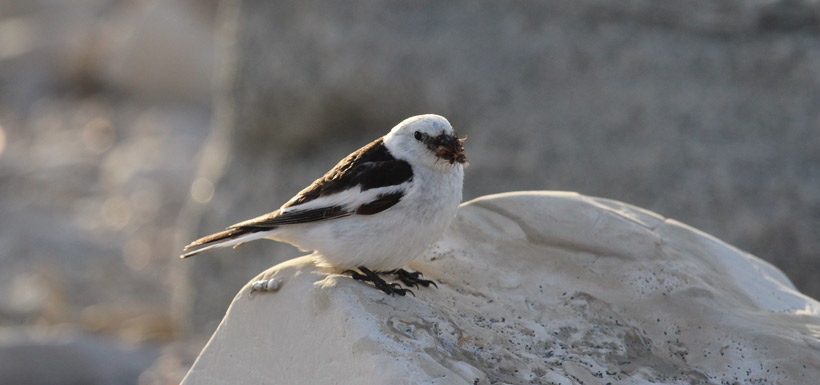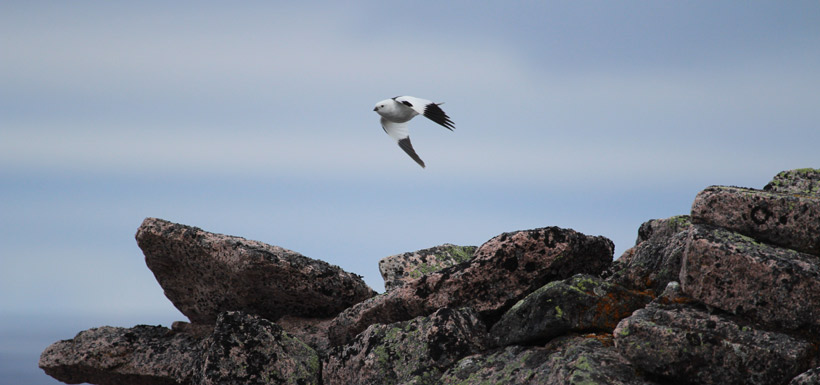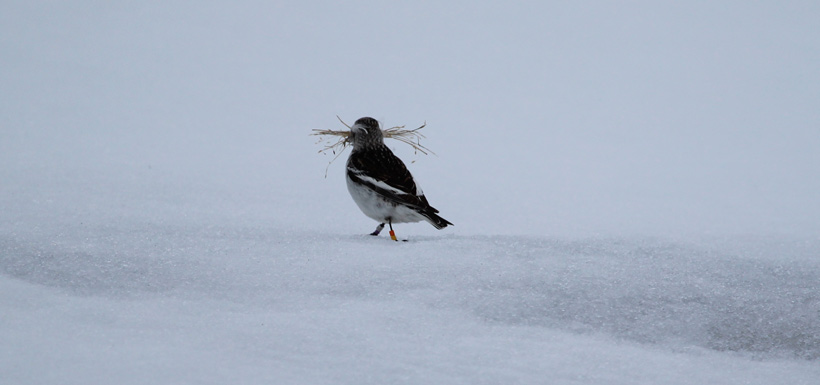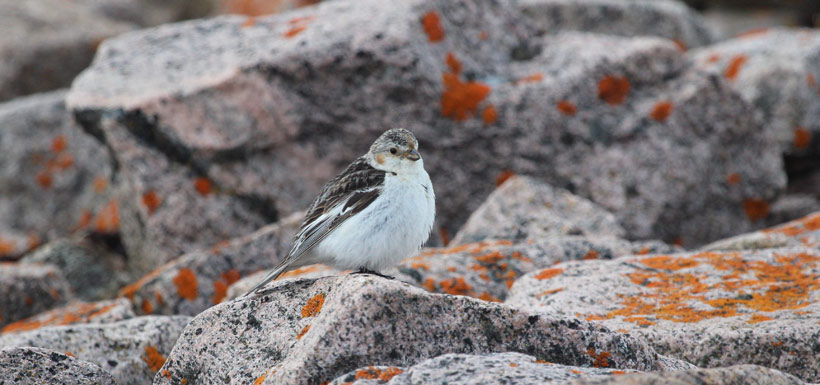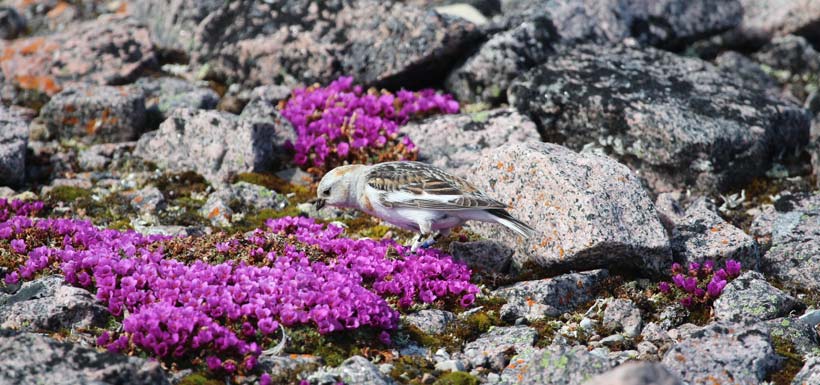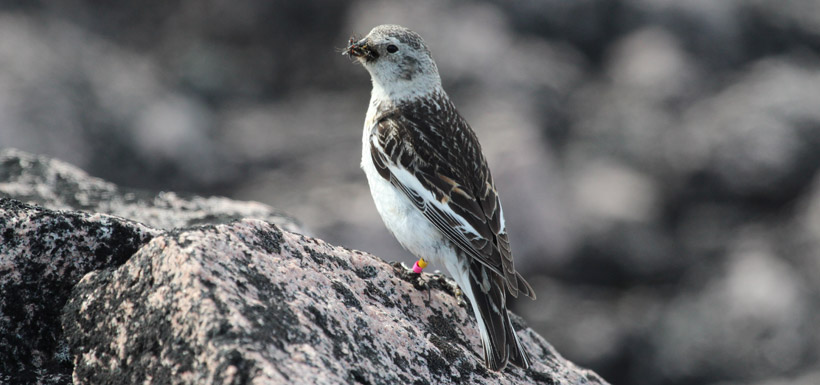Winter isn’t just for the birds
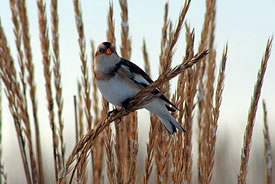
Snow bunting (Photo by Wikimedia Commons, John Haslam)
While many bird watchers and nature enthusiasts in Canada might look forward to the spring – a time when millions of migratory birds return to fill Canada's forests and grasslands with a chorus of songs each summer – I experience a similar sense of anticipation in the late fall and early winter. This is because this season of blowing snowflakes, leaf-less trees and snow packed fields marks the return of some of my favourite bird species: snow buntings, Lapland longspurs and snowy owls!
With their golden eyes, impressive wingspan and even the occasional role in box office hits like Harry Potter, the majestic snowy owl often tops the list as everyone's favourite bird. However, I might argue that the snow bunting makes for a more captivating sight, because if you are lucky enough to see one this winter, you are likely about to see hundreds, or even thousands, more.
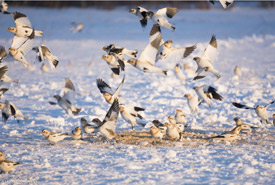
A flock of snow buntings (Photo by Bill Maciejko)
In winter, huge flocks of snow buntings "drift" across snowy fields and shores searching for areas of exposed ground where they might find seeds or spilled grain from last summer's crop. While large flocks of these small black and white birds can be masked under snowy conditions, they are easily seen along coastlines or roadways adjacent to open fields. With a keen eye, and depending on where you live, you might also see the occasional Lapland longspur or horned lark travelling among them — for these are their summer neighbours in Canada's far north.
Snow buntings spend their summers north of the treeline, tending to nests scattered far and wide across the vast Arctic tundra. These birds sing melodic songs to defend territories that might be distinguished by the boundary of a small pond, a certain rock or gravel esker – subtle features that can be important markers across this tree-less landscape.
Adults lay eggs in rock crevices and rely on the seasonal abundance of insects to feed their offspring. Once the short Arctic summer comes to an end, snow buntings begin their journey back to southern Canada where the cool weather and blowing snow make them feel right at home.

Just like the millions of birds that travel annually from the boreal forests of Canada to the tropical forests of South and Central America, snow buntings also migrate extremely long distances annually. However, unlike their warm weather cousins, many Arctic-breeding songbirds complete their annual migration within Canada – from the northern tundra to the southern prairies.
But don't let their lack of passport stamps fool you! When looking at a map of Canada, I am reminded that Canada's land mass spans approximately 4,500 kilometres from north to south (greater than the distance from Toronto to Trinidad!). This long migration truly is a testament to the athleticism of these small birds (and the enormous size of our country).
As winter sets in across southern Canada this year, rather than counting the days until spring or following the birds south, keep any eye out across the snow to see what northern migrants might be out there waiting for you. Exploring the outdoors in the winter could be just as lively and full of wildlife as any other season!
If you are interested in learning more about snow buntings or following snow bunting researchers, as part of the Canadian Snow Bunting Network, as they observe, band and tag birds this winter, check out their Facebook page and the Ruthven Park Nature Blog.
Enjoy the following slideshow showing of snow buntings photographed in the Arctic summer.
Click to enlarge photos.

